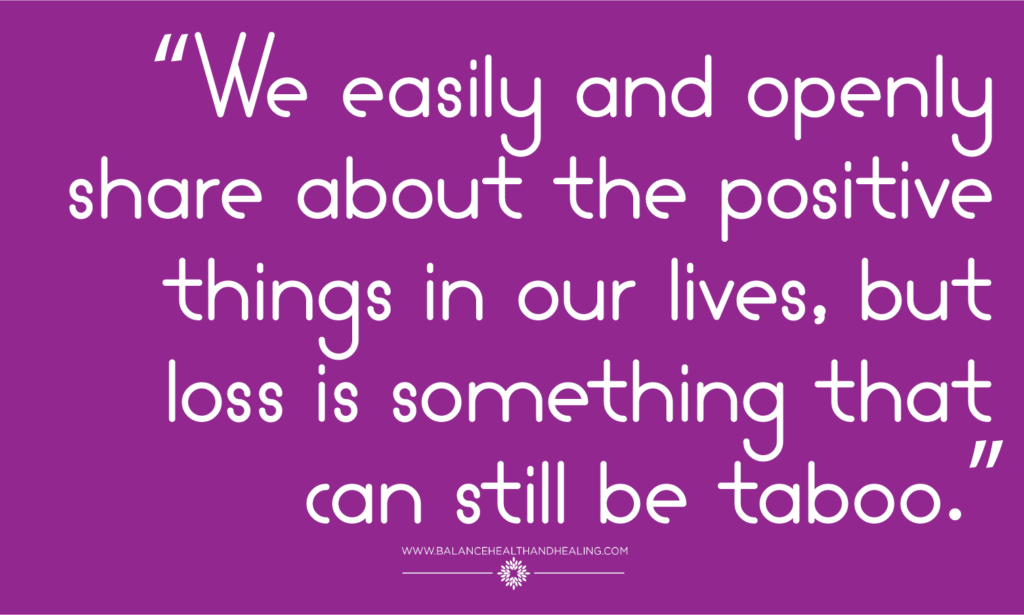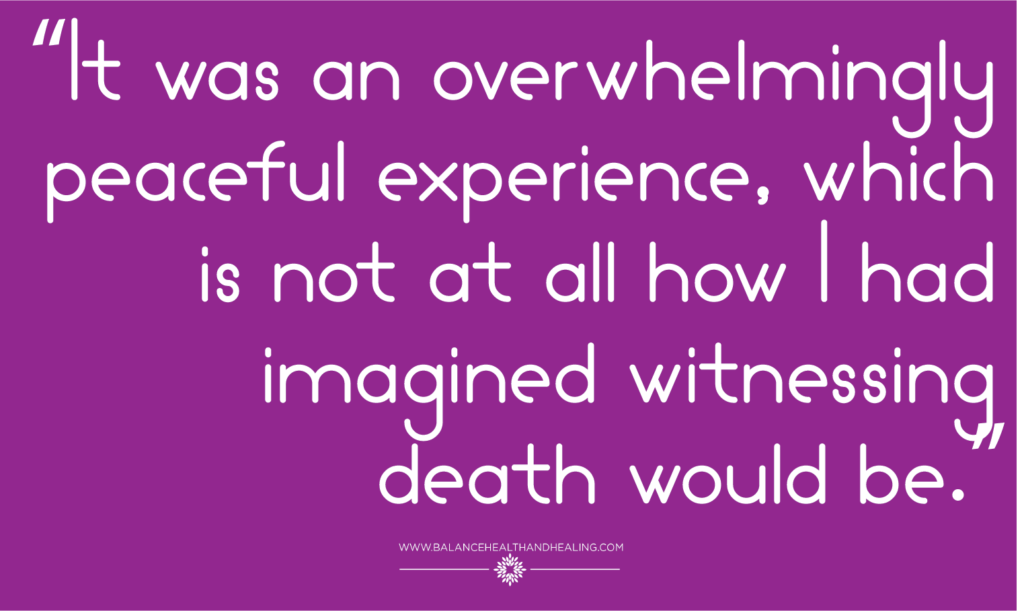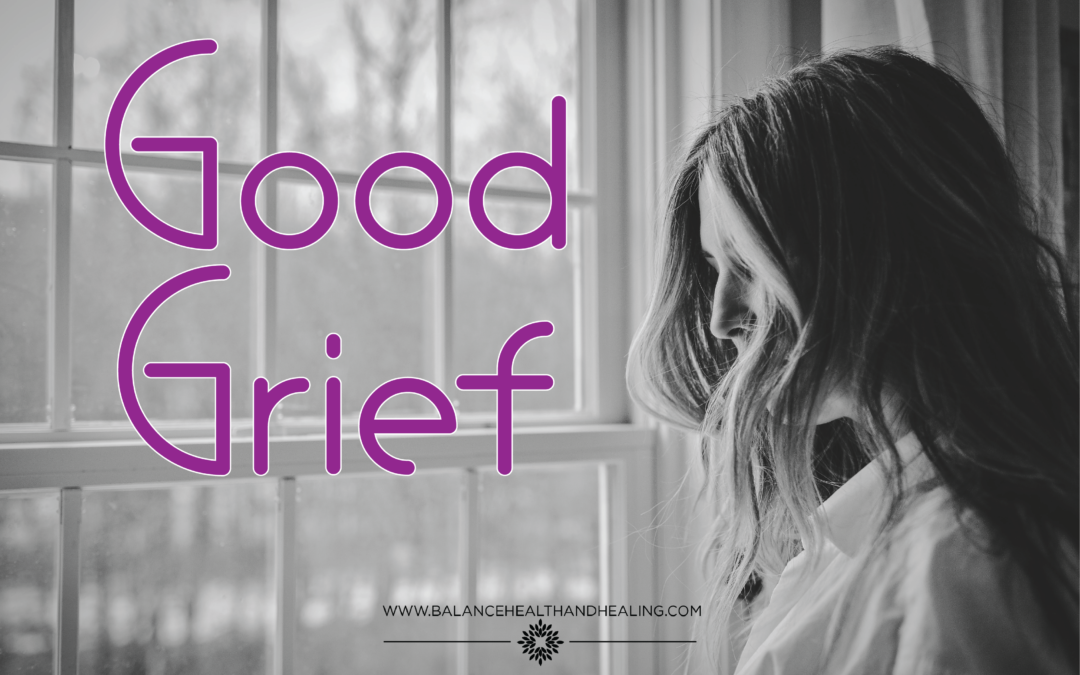Since the beginning of the year, I have been studying and preparing to become a certified thanatologist. (Thanatologists are experts in the field of dying and bereavement. Don’t worry if you haven’t ever heard of them – I was in your shoes two years ago! I met a thanatologist during a grief training seminar and I was like, “wait- that’s a thing? Sign me up!”) While this isn’t an area of work that many people get excited about – I really deeply connect with it.
 Loss is such a universal experience that nearly every human runs into it at some point. It’s so interesting to me that unlike other normal human experiences, we don’t often talk openly about loss. Imagine a world where it felt strange to speak about the birth of your child, or taking a new job opportunity. We easily and openly share about the positive things in our lives, but loss is something that can still be taboo.
Loss is such a universal experience that nearly every human runs into it at some point. It’s so interesting to me that unlike other normal human experiences, we don’t often talk openly about loss. Imagine a world where it felt strange to speak about the birth of your child, or taking a new job opportunity. We easily and openly share about the positive things in our lives, but loss is something that can still be taboo.
We used to be somewhat public about acknowledging loss – maybe not by talking about it more, but at least in acknowledging it. It wasn’t that long ago that people regularly wore “mourning” clothes for a time after their loved one passed away. The custom varied between cultures, but the basic idea was that those who had lost a loved one wore black clothing to signify that the person was in mourning. While this specific act has fallen out of fashion, in today’s culture, you may notice that it has become popular to have a decal made for your rear car windshield with the lost one’s name and dates on it, to change a social media profile picture to include the deceased’s photo, or to start a meaningful charity to memorialize a loved one. These types of outward announcements of mourning serve to alert those around the mourner that they are missing someone near and dear to them. They become a physical reminder of one who is no longer physically there, in much the same way as mourning clothing once did.
Since Victorian times, there have been several key ways we have looked at loss. These theories or models give us a framework of expectations and language for the experiences we are having. The idea of having a “broken heart” became commonly used to put into words the experience of pain in bereavement. You may be familiar with the idea of the “5 Stages of Grief” model by Elisabeth Kubler Ross, or newer models such as the Dual Process or Continuing Bonds models. Whichever model seems to ring most true to your personal experience, they all serve to help us make sense of something that can feel overwhelming to our senses.
Thankfully, we are moving towards letting go of the fear of talking about loss. We once held the idea that talking about suicide increased the risk of suicide, yet the research showed that the opposite was actually true – asking people if they were experiencing suicidal ideation saved lives. I can see an almost parallel fear in talking about loss, driven from a desire to be helpful – but talking about the loss doesn’t prevent the person experiencing it to move forward. It gives them an opportunity to connect and learn from others.
My first real experience with loss was the death of my grandfather. I sat by his bedside, holding his hand as he took his final breaths. This man that I loved so dearly slipped away from this world as I sat watching. It was an overwhelmingly peaceful experience, which is not at all how I had imagined witnessing death would be. Because I had this frame of reference, it better prepared me for other experiences with death, including the death of my son four years later. While it in no way took away the grief and anguish of that event, my prior experience with death gave me an understanding I wouldn’t have had the benefit of before.
slipped away from this world as I sat watching. It was an overwhelmingly peaceful experience, which is not at all how I had imagined witnessing death would be. Because I had this frame of reference, it better prepared me for other experiences with death, including the death of my son four years later. While it in no way took away the grief and anguish of that event, my prior experience with death gave me an understanding I wouldn’t have had the benefit of before.
In a very similar way, sharing about our experiences with loss can help others better process their own loss. Talking and learning from each other can provide meaning, language and framework that help us understand and process our own loss. In this way, mutual growth and understanding can come to those who are willing to explore a topic that may – at first glance – be easier to ignore.
In our modern time, we don’t pass neighbors in mourning attire while going about our day, yet even without these outwards symbols to remind us, we still are surrounded by people in pain. By turning towards that pain, instead of away from it, we get to partake in an exchange of comfort and wisdom that will deepen and enrich both lives.
That’s good grief.

